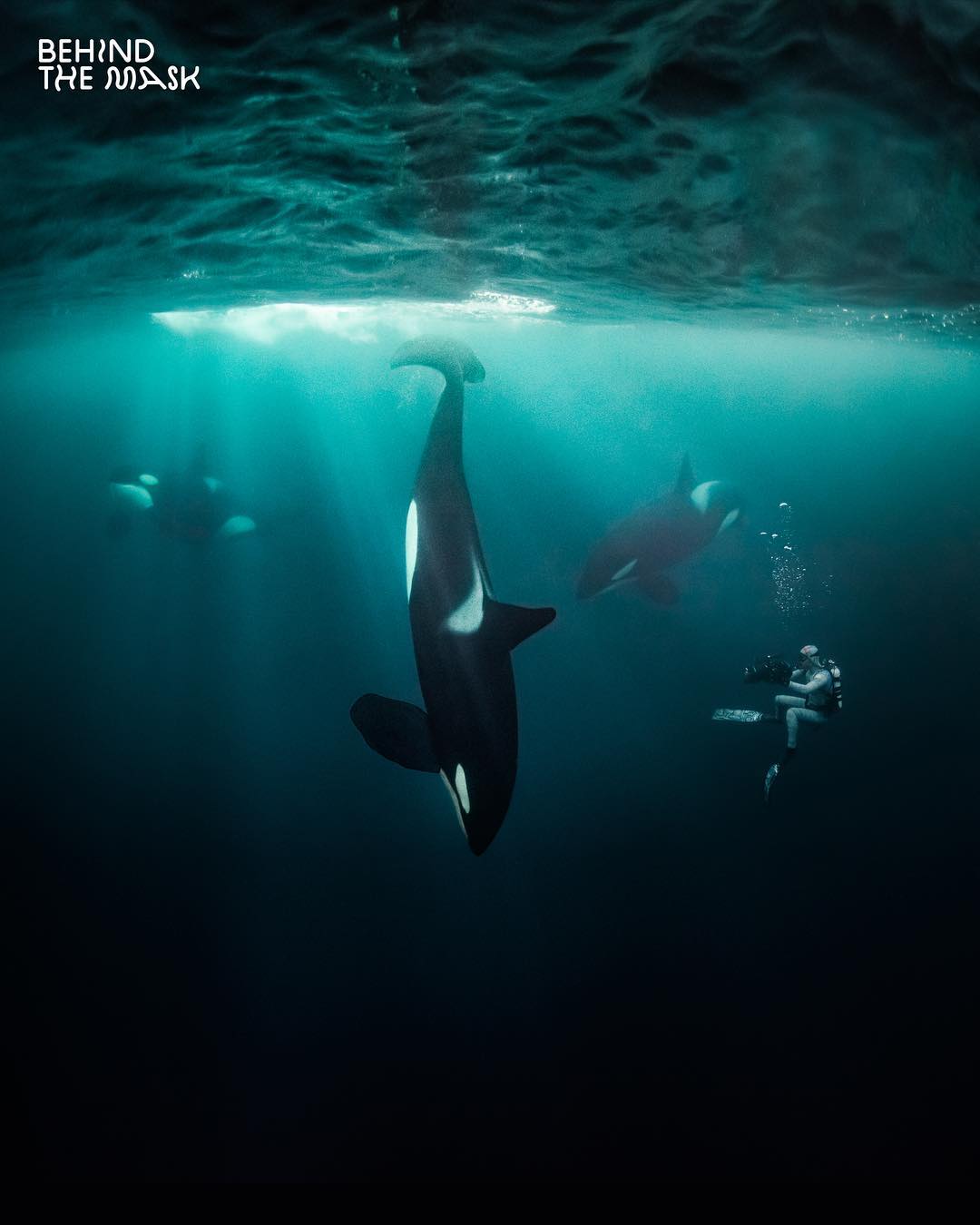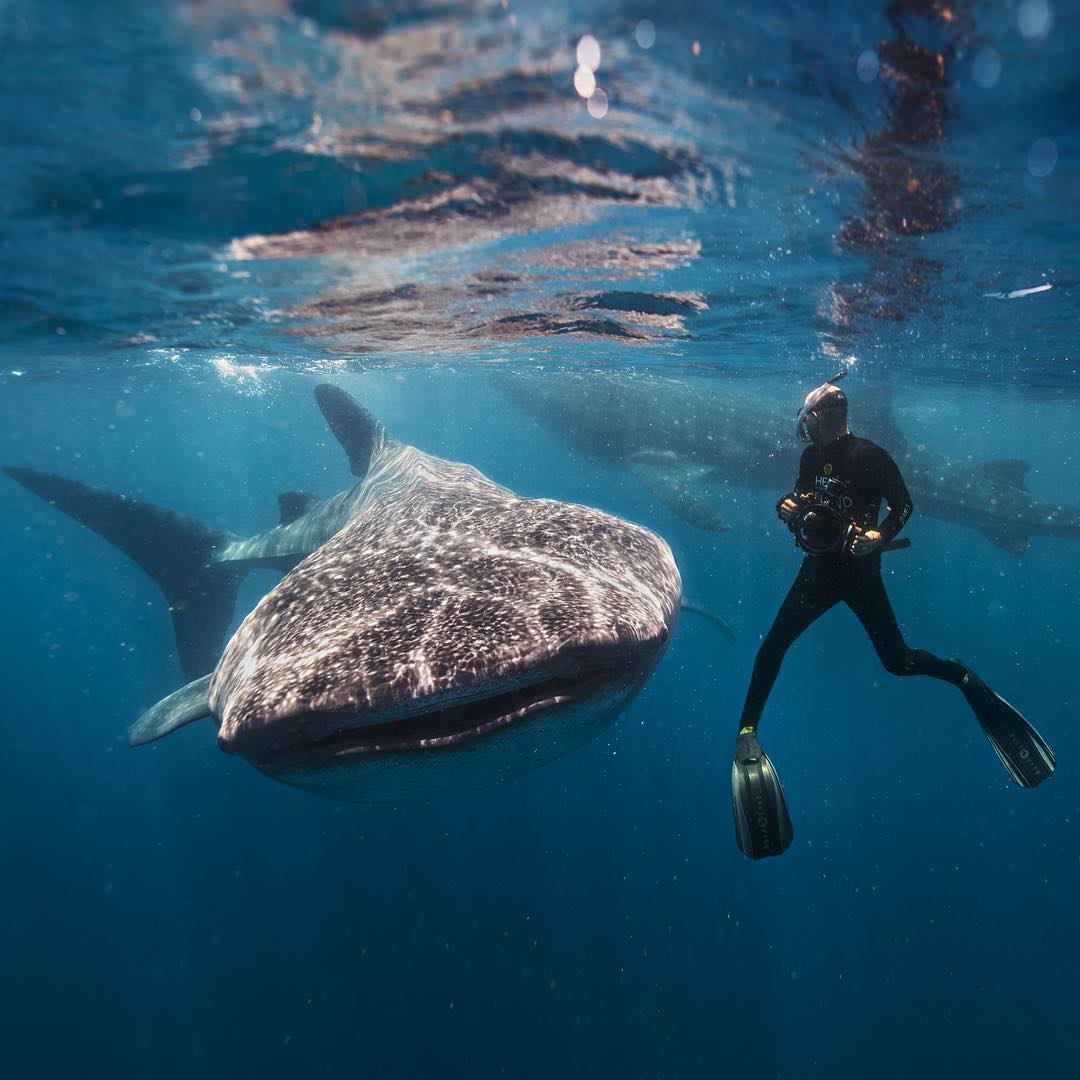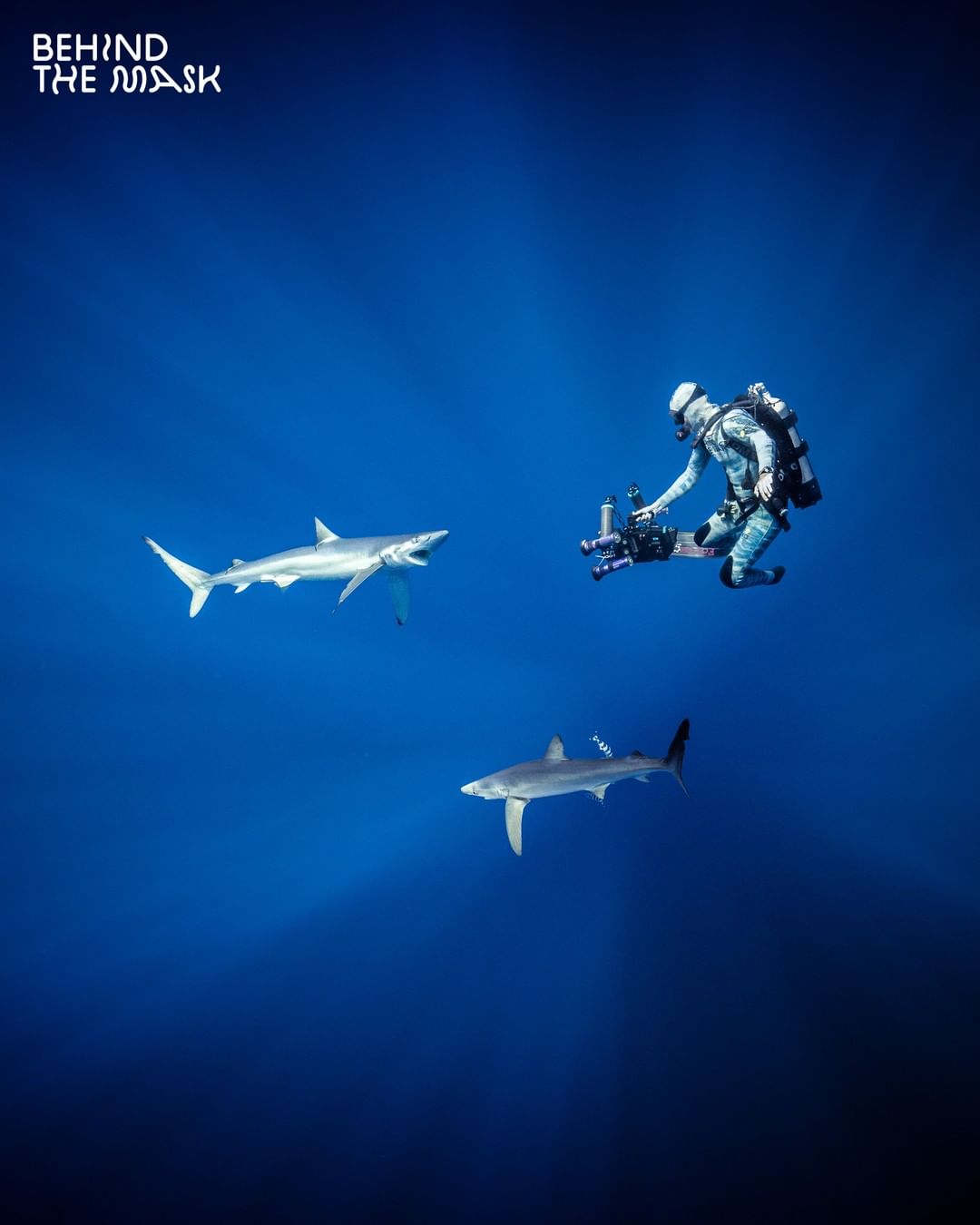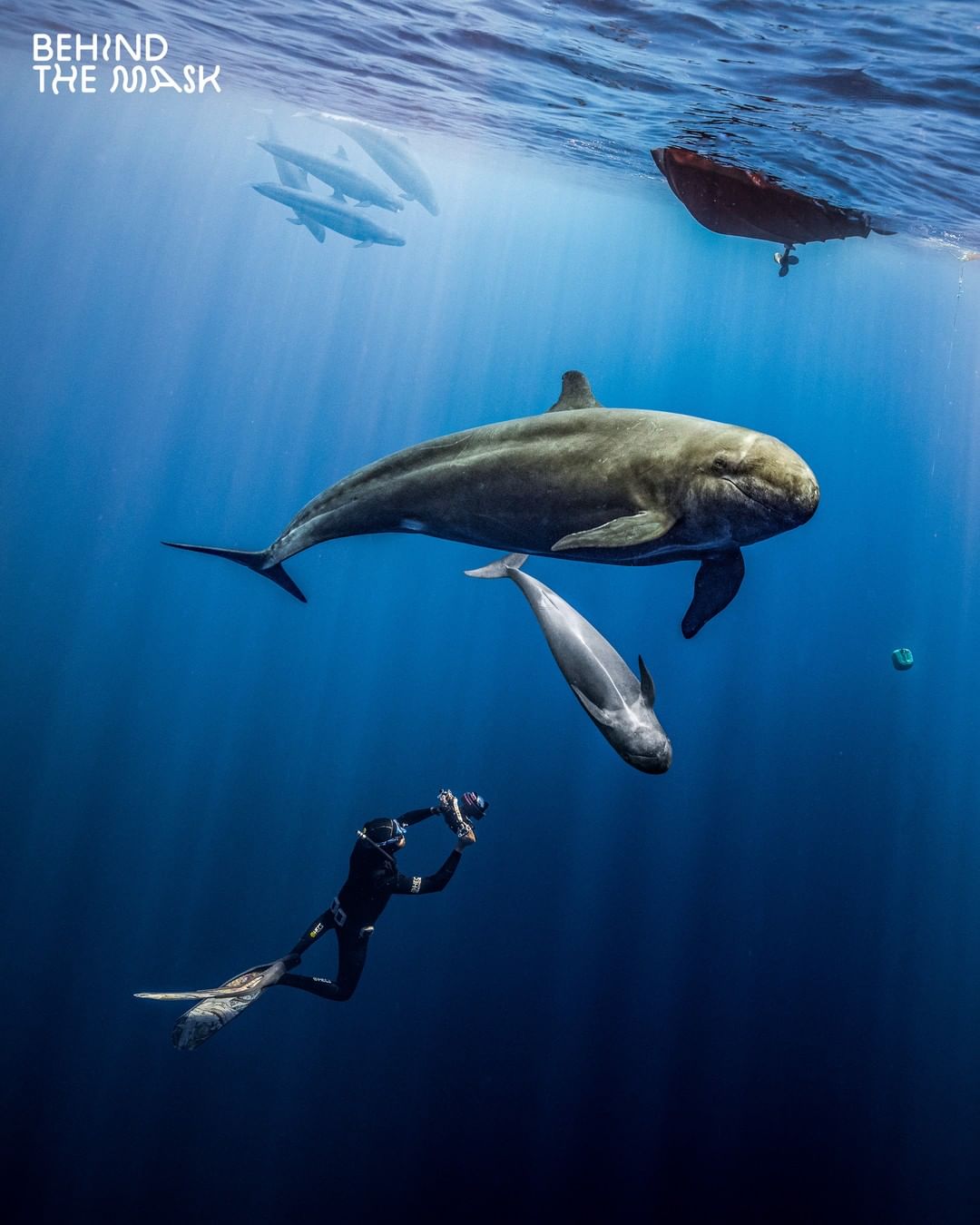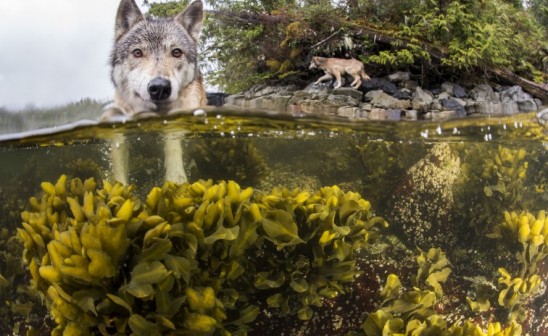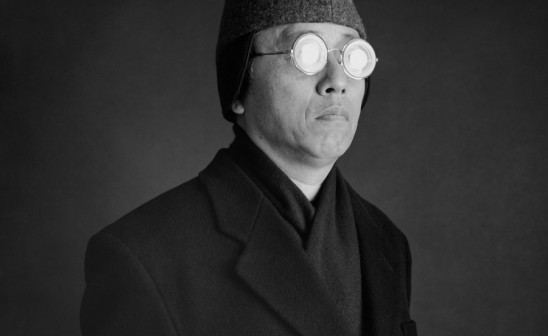We figured out how we could raise awareness differently. Today, we document the beauty of the ocean to bring people want to save it.
German director Florian Fischer, 40, discovered diving at the age of 18, while on a trip in Egypt. Today, he describes diving as his favorite creative playground. « For me, diving is linked to creativity. I like diving but I’m not the typical diver who enjoys just to be there. I need my camera because I always have some visual ideas. » Florian evolved from being a graphic design working in the advertising world to a documentary filmmaker documenting the civil war in Burma to an independent filmmaker. Guided by his creative instincts, Florian co-founded Behind the Mask six years ago in order to shine a light on the beauty of nature and the ocean. « Dealing with conservation with a clear conservation message is important, but we figured out how we could raise awareness differently, » he explains. « Today, we document the beauty of the ocean to bring people want to save it. »
Behind the Mask’s films and stories are loaded with authenticity. Drawing from his experience as a creative mind in a narrow world that didn’t suit him, Florian believes that nothing beats telling true stories with guts. « It’s not about me, it’s not about a production company, it’s more about a community. At the end of the day, we portray authentic feelings. And there is no other way to do it than actually feel these emotions. » Similar to French freediver Guillaume Néry and underwater & wildlife photographer Greg Lecoeur, Florian is surrounded by a global network of creative nature enthusiasts. This community being the masterpiece of his work.
Avoiding compromises, looking for beauty, the collective constantly dives deep in the seven seas. From Azores to California, from Papua New Guinea to Indonesia, across the fjords of Norway or on a recent trip to Antarctica in -1°C water, Behind the Mask managed to combine what all creatives dream of: the perfect balance between a certain kind of creative freedom, a bunch of transparency, lots of passion and a needed touch of insanity.
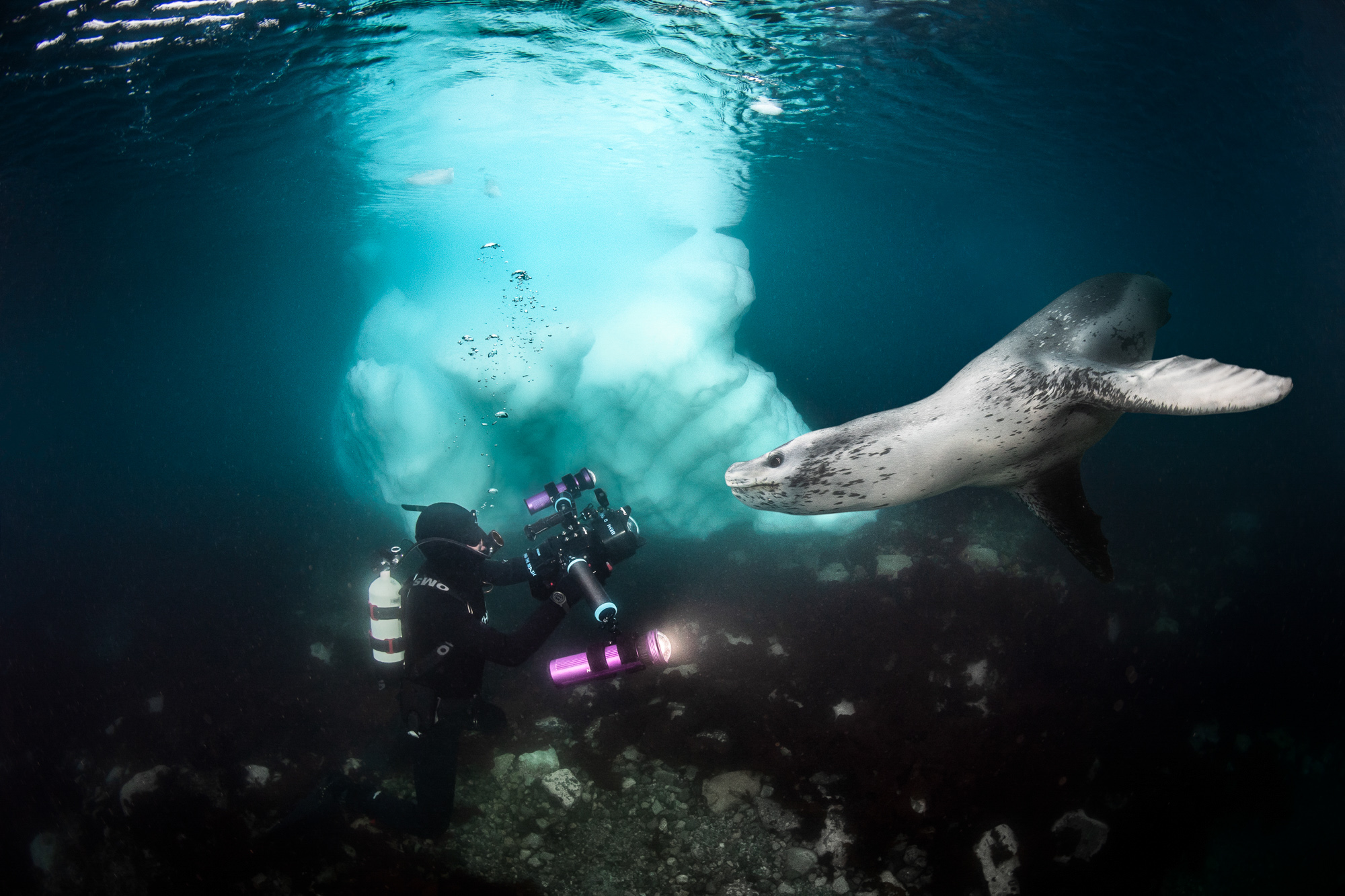
Tell us more about you and your background..
I’ve always been working as a freelancer in the creative industry, mostly doing websites and graphic design. I studied filmmaking and worked a lot in the advertising industry. At the same time, I was also working for a big advertising agency in the south of Germany as a documentary filmmaker. I worked a lot in Russia (Siberia) and in Central African Republic. Then I spent most of my time working on the issue of the civil war in Burma (Myanmar). I’ve always seen myself more as a documentary filmmaker rather than a scenic filmmaker where you need a lot of people and need to wait a lot of time until something happens. While documenting the horrible genocide in Burma, I realized how difficult it was to raise awareness on something because it’s hard to find the right way to address people, especially when it comes to human rights or conservation. Everyday, people feel already guilty about a lot of things. So it’s difficult to make a difference. After my studies, I worked as a creative director for a company for a year. And I hated it. Then, I had a company with 18 employees for 4 years. It was an online agency where we developed websites. I was in charge of the design and creative part. After that, I did a lot of filmmaking for advertising companies and fashion brands. And I also hated that. The fashion industry is a very bad place for creative people. I decided to use my passion and do it for my own fun.
That’s when you decided to created Behind The Mask?
Yes, it was 6 years ago. I started Behind the Mask with two friends. Nothing serious at the time. We all had our job but thought maybe we could make a few films about diving, and maybe we could go on diving trips for free! That was the whole idea at first. We were 3 guys at the time, a photographer, the other one was a diver, and me as the filmmaker. We first worked with travel agencies and brands. I live in Germany and I know there’s a lot of people living close to the sea and have way more opportunities than we have. So at the beginning I thought it was not something very promising, just something to do on the side. But eventually, 3 years ago, I quitted my job and sold my shares in the company. I didn’t like working as a CEO for the company and preferred to be fair to my partners. So here I am today, working full time for Behind The Mask.
How did you get introduced to the sea, the ocean or the global water element?
Diving is very much connected with the filmmaking. I’ve not been diving without a camera for many years. I like diving but I’m not the typical diver who enjoys just to be there. I need my camera because I always have some visual ideas and I hate when I feel like I miss something I can’t capture. When I don’t have my camera, most of the time I don’t go in the water. For me, diving is linked to creativity. I started diving at the age of 18, more than 20 years ago, on a trip to Egypt with my girlfriend. We had a camera with plastic bags around, this kind of homemade housing. We had to fix it several times because there was water coming in. Slowly, it became a thing! Today, if you look at the diving community, I don’t relate much to it. I have a very specific opinion regarding the diving industry especially in Germany. When I started diving, I thought it was fun. It meant adventure, excitement, being close nature, it was about discovering new things and, at the same time, diving is something you can share with other people. My vision of diving never included any notion of competition. I’ve always enjoyed diving as a creative playground. I see it as a feeling, as a chemistry. Diving is an easy place to collect all the emotions and feelings, it’s also an abundance of stories, people, species, animal and locations. There’s a million things. Diving is the coolest thing on earth. The diving industry in Germany is far behind this vision. So I thought there was a great opportunity to combine all the things unique about diving.
3 years ago when you sold your shares to the company, what was your precise vision of Behind The Mask?
I have been quite lucky since the very beginning. I could have made decisions not based on business only. I don’t have a lot of money on the bank but thanks to my work, I achieved some creative freedom. I can be both creative on one side and be paid on the other. I don’t have to make compromises. Every creative person dreams about doing what they like to do, grow their creativity, and be valued and respected for it. For me, it was clear. I wanted to invest in something bigger. It’s not about me, it’s not about a production company, it’s more about a community. Most of our collective decisions are taken with a strong eye on community, on bringing people together. For example, for most of the projects, we spend 80% of the global budget on the logistics and on paying people. Most of the time, we bring more people than we need on set and during trips, just because we want to have a good time together, and we want to achieve this together. At the end of the day, we portray authentic emotions and feelings. And there is no other way to do it than actually feel these emotions. So it’s been a journey to find people I enjoy working with, who are also flexible and who want to serve that community. We like to make tutorials in order to share experience and knowledge. In the first place, the idea of Behind the Mask was to be very transparent with everything. I always hated it when I saw a picture about a place where somebody obviously tried to make it even more than it actually is, by not telling where it is, or not telling when it is. So I thought it would be pretty cool to give these infos to the viewer. Transparency means we always disclose everything. What we do, how we do and what equipment we use… We show and share everything as we’re not trying to make ourselves super cool or super special. All of that is only possible because of this sense of community. We have enough clients and projects to allow us to do that today.
Tell us more about this community gathered around Behind the mask…
There’s a lot of people who are considered to be a member. There are 4 to 5 core members involved with mostly everything. Hamdan Chowdhuri is from Bengladesh, Canada and Singapore and he is our Good Vibration Manager. He also shoots a little bit underwater. He’s an amazing person, everybody loves him. Timo Dersch is the project manager, doing the office stuff, planning things, posting things and writing comments. He’s from Germany and comes from the diving industry. He’s been an editor for a magazine and also shoots photos. We also have Maika Grützediek , she worked as the editor-in-chief of a magazine and resigned a couple of years ago. She’s more experienced in life than the rest of us. She communicates with potential partners and sponsors, and knows all the advertising clients. She has a very good standing in the watch industry for example. Dada Li comes from China, she is a freediver and Padi ambassador. She’s also a very successful blogger in China, she helps us in the Chinese market and is also part of our production works. She is definitely a smart brain. We have Marta from Spain, the newest member of our team. Marta won a competition on Facebook to join us on the project. She is now part of the team. Vanessa comes from Germany and is doing all the tutorial videos about underwater images, she does motion graphic. Peter is also a new member and works as a filmmaker. These are people I communicate regularly the most. Everybody is doing his or her own stuff so that it’s a loose network, but when you look at how much we spent time together last year, it’s maybe more than with our own family. Mario Medarevic is in charge of Dive World Canada, he’s been on a project in the Bahamas with us recently. Whenever we have technical issues, we can relate to him. Then, there are a lot of freelance friends, ready to go on a trip whenever it’s possible but they’re not involved in decision making. Greg Lecoeur is one of the photographers we regularly work with. We’ve been to Antarctica in February and March along with Guillaume Néry…
Tell us more about this recent trip to Antarctica with french photographer Greg Lecoeur and freediving champion Guillaume Néry…
It was a project of 3 different personalities. Guillaume Néry is a freediver and more of a creative mind. He’s also a writer and a multitool creative. Greg Lecoeur is an outstanding National Geographic photographer, and I’m a filmmaker. We thought that doing a project together, we could, from different angles, raise interest of the same place. It was also an experiment to do something together and see how we relate to this special place of Antarctica. None of us has ever been there. Guillaume is wiring about it, I’m doing a film about it and Greg made pictures. We’re thinking of doing an exhibition, a book and a multi series-documentary. The trip was more challenging than expected because of the weather and because we didn’t have enough time. So we’re thinking of going back there and doing it again. It was an interesting experience because it worked well with the 3 of us. We became even closer friends. Now, we’re currently releasing a few videos about this trip.
There was an ecological aspect as well, wasn’t it?
We partnered with Parley and took water samples to see whether scientists can find micro plastics in Antarctica, which is an inhabited continent. It would be interesting to see the human influence on such a continent regarding plastic pollution, but we don’t have any result yet. We took 75 different water samples on different locations that scientists will have a closer look on. The samples are still in Ushuaia, Argentina, as we need to figure out how to send the samples to the US-based scientists. Antarctica is an interesting place with a challenging environment. Swimming in -1°C water in a wetsuit was a thing! We learned a lot about ourselves.
Most of Behind the Mask’s projects seem very challenging indeed. What was the idea behind your « Life is an Ocean » project made in collaboration with Boot?
Behind the Mask is the official ambassador of the Boot show, so we work together with the show as an umbrella company to support what we do. We promote the show because we think they’re doing great. Boot is one of our partners. Life is an Ocean is basically a summary of our four last years. It shows the viewer how we feel about what we do. Life is an Ocean relates to all the emotions that you have, you can mirror those emotions in the ocean. It’s a bit of a philosophical narration. We want to inspire people and get them interested in this world they might not know much about. At the same time, we also want to inspire people who are already divers or content creators. At the end of every year, we create a video that sums up our year’s projects and this video campaign is a common platform your can relate to.
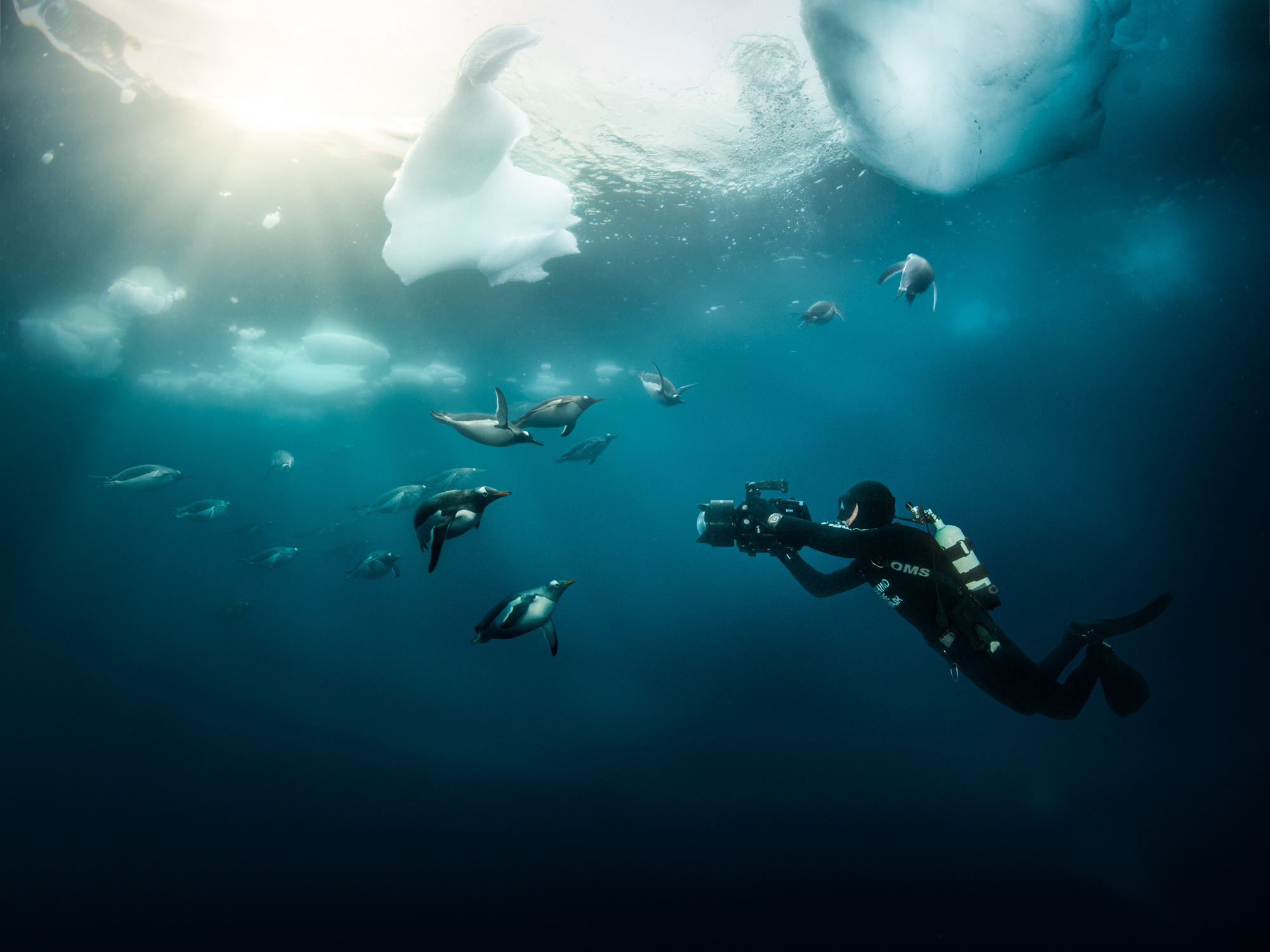
In one of these summary videos, you said « We believe that more people should feel the ocean magic so that we can save it. » Is Behind The Mask a way for your to raise awareness of the ocean?
Well, we’re not there yet as we didn’t find the tool we can use to really promote conservation ever more aggressively. For now, the goal is not to point at negative things. We try not to push people to change their life while providing content that people can make this conclusion by themselves. In the beginning, I thought the idea was a bit weak, NGOs would do differently, but I don’t feel confortable doing that. We’re not scientists and we don’t want to end up in the same box as everybody else. Dealing with conservation with a clear conservation message is important, but we figured out how we could raise awareness differently. Today, we document the beauty of the ocean to bring people want to save it. Everybody relates to the beauty of the ocean and we need to protect it. It gives us more satisfaction and confidence and it acts better than we thought.
What do you like the most in your job today?
I have the freedom and capability of bringing together people, and involving different kinds of people. I like to collaborate with creative minds and like to support and assist people in what they want to do. I also try to include this under Behind The Mask. The biggest challenge is to deal with teams and people, and to give people enough room to grow and do their own things. How I envision Behind The mask in the future? I see it as a lot of different things. We’d like to release masterclass tutorials for underwater imaging for free, so people can learn how to technically do it. We’d like to create a community, giving them the possibility to be part of something. Now that we have a lot of dedicated people united under the same philosophy, I personally need to give some things away. The freedom of creating projects not based on how much money it makes is probably what I enjoy most, as well as the trust from collaborators and clients. For example, we never make storyboards. The way we work is very creative and free. We always keep for ourselves the option to change things. When we go somewhere and realize the conditions are bad, we change our plans. We have a deal with our clients: They don’t have to pay anything if they dont like it, and won’t be able to use it.
Do you have funny stories to tell about projects that didn’t work out well?
We had a few funny catastrophes where things didn’t work out! We had a project for Mercedes, a story about a small girl and sharks in Scotland. We drove there with two cars, it took us 2 days. We had 12 people around. Greg Lecoeur was there, there was all the logistics planned for 2 weeks of shooting on an island. But the weather was so bad that we couldn’t do anything so we needed to rearrange and move everything to the other side of the UK. We reshot the video about the girl with great seals, which, in the end, the client loved very much. But it’s the perfect example of what challenge means! In the end of the day, this is what make the best memories. I enjoy to collaborate with interesting people like Fred Buyle, amazing freediver and underwater photographer. We stayed in his house in Azores for two weeks and became friends. Stuff like that is the coolest. I love to plan new projects and involve creative people.
What are the new projects coming up for Behind the Mask and its team of creatives?
There’re so many different things going on. Next week, we’re going to Italy, we do an interesting collaboration with a glass artist who is shaping glass, statues and objects out of glass and water. Then, we stay a week in Egypt with our community, a group of 24 people, diving all together. We fly to Philippines a week later for a Chinese customer. After that, we stay in Indonesia for 3 weeks. Then we’re heading to cover the Sardines Run, making a film about this great adventure. Then back to Indonesia, Komodo National Park, as part of our community trip. Then, we work with the Tourism Agency of Papua New Guinea. We have a 7 weeks project there. Then, heading to French Polynesia with Guillaume Néry, one in October then in December. We might be in Norway for the orcas. Then, it will be Christmas and we have to prepare the Boat Show. This year, we gonna have a live studio over 9 days, interview people from the image community and broadcast it live on the internet. Then, April 2020, we have a nice project with a group of handicapped divers in the Bahamas. Our schedule is pretty much busy until June 2020!
Learn more about Behind the Mask on their website.


